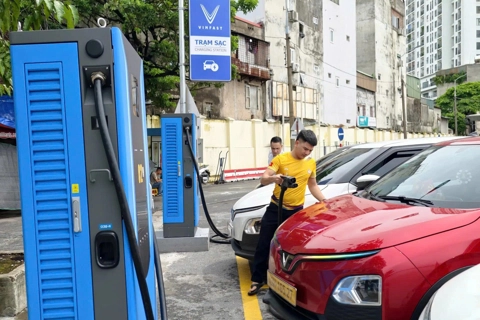All enterprises in Hanoi use e-invoicing, meeting target 3 months in advance
E-invoicing helps businesses save a significant chunk of expenses related to paper invoices, including printing, storing, and administrative procedure compliance cost.
As of the end of September 2020, 99.7% of total enterprises and business associations in Hanoi have registered to use e-invoices, three months in advance of the target set by the Hanoi People’s Committee, according to the municipal Department of Taxation.
| 99.7% of total enterprises and business associations in Hanoi have registered to use e-invoices. Photo: Chien Cong. |
The Department of Taxation pointed out a shift to e-invoices from paper-based ones brings multiple benefits for both enterprises and the society. The agency has been promoting the benefits of e-invoicing to the business community upon instructions of the municipal People’s Committee.
Additionally, the Taxation Department has also published hotlines and emails for taxpayers to report concerns, and sent information related to e-invoices to enterprises in Hanoi for their convenience.
For enterprises, e-invoicing helps them save a significant chunk of expenses related to paper invoices, including printing, storing, and administrative procedure compliance cost.
Moreover, using e-invoices is much safer as all data is stored in servers, helping firms quickly trace back information of their business partners and the origin of the invoices if needed.
For the society, e-invoicing would minimize risks of billing frauds and ensure transparency and contribute to the development of e-commerce, in addition to keeping a healthy and fair business environment.
Under a national plan for the development of e-commerce by 2025 released on May 18, the Vietnamese government has set the target of achieving around 55% of the population shopping online with an average spending of US$600 annually by 2025.
Revenue from online sales of business-to-consumer e-commerce, known as B2C e-commerce, is set to grow by 25% per year to US$35 billion, accounting for 10% of total goods retail sales and service revenues.
Meanwhile, the government expects the share of population using related services, including non-cash payment services, would be at 50%, and through intermediary payment services at 80%.
By 2025, 80% of e-commerce websites should integrate with online shopping and 70% of them will provide electronic invoices.
Notably, Hanoi and Ho Chi Minh City would make up half of e-commerce revenues in the next five years.

.jpg)









